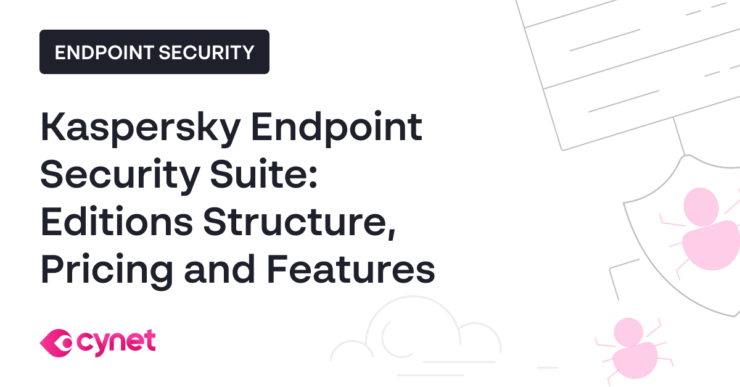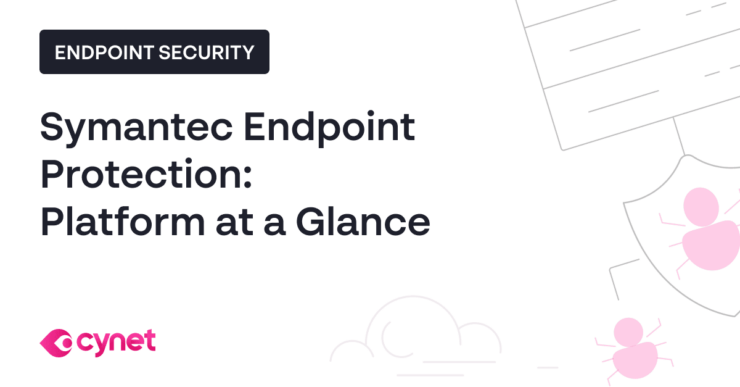Last Updated:
January 2, 2025
Next-generation antivirus (NGAV) solutions are a new generation of malware protection software that can address the latest cybersecurity threat scenarios. NGAV leverages machine learning and behavioral analytics, in addition to traditional signature-based detection, to address unknown and zero-day threats, fileless attacks, and other attacks that cannot be detected by legacy antivirus.
How Are Traditional Antivirus and NGAV Different?
NGAV was designed to improve legacy antivirus software. Legacy antivirus relies on signatures associated with known malware files (these are unique hashes computed based on the contents of known malware files). Traditional antivirus software is loaded into your computer, scans files and compares them to known signatures. This is effective, but only works against known attacks.
This is where NGAV comes in. NGAV is able to identify suspicious behavior and potential threats, even if these attacks have not been previously detected and classified and there is no known signature. Another type of threat NGAV can detect is fileless attacks—these are threats that run in system memory without making changes to the file system, and so are invisible to legacy antivirus.
Related content: Read our guide to malware detection
Another key difference is that NGAV is typically cloud-based. This means it can be rapidly deployed to a large number of endpoints, and is more frequently updated with new threat data. Legacy antivirus often has to be installed, manually or via scripts, on each individual endpoint device.
A final difference is that legacy antivirus might consume bandwidth on devices, because it needs to download threat databases. With NGAV, these updates are not required and there is less performance impact on endpoint devices.
Related content: Read our guide to malware prevention
How NGAV Works
Next-generation antivirus incorporates various modern technologies to protect endpoint devices using a fundamentally different approach from a traditional antivirus. It uses machine learning algorithms and leverages cloud-based architectures to block dynamic, sophisticated threats.
NGAV uses the following elements to secure target machines:
- Lightweight architecture—the cloud architecture of NGAV minimizes the impact on endpoint devices. There is a single, lightweight agent, enabling security without affecting performance.
- Advanced prevention capabilities—a true NGAV uses sophisticated prevention methods and tools to block malware and malware-less attacks, regardless of the attacker’s tactics, techniques, and procedures. These methods and technologies may include machine learning, behavioral analysis, adware and exploit blocking, customized allow and deny lists, and attack attribution capabilities.
- No reliance on signature updates—machine learning algorithms can analyze large volumes of file details in real time to identify malicious files. NGAV uses signatureless technology to identify and block known and unknown threats regardless of malware signature updates, even for endpoints not connected to the cloud.
- Offline and online prevention—NGAV supports endpoint-based data processing and decision making, including offline and online prevention measures. It provides highly accurate incident detection and prevention capabilities, ensuring endpoints remain protected in any environment.
- Fast time-to-value—NGAV solutions are deployable immediately and can be fully operational within hours. They don’t require additional software, hardware, configuration, or tuning.
- Minimal management requirements—NGAV can integrate seamlessly into various environments without introducing complexity or increasing the management burden. It is possible to deploy NGAV without the on-premise infrastructure to manage the solution.
NGAV vs EDR/XDR: Better Together?
NGAV is an important first line of defense for organizations, but no matter how advanced, it cannot guarantee complete protection. Some threats will inevitably bypass the NGAV solution, and this is where endpoint detection and response (EDR) comes in. EDR can detect activity and deter the adversary before it starts spreading across the network.
When NGAV is combined with EDR, businesses can more accurately identify suspicious activity, block malicious activities on endpoints, and respond to severe threats faster and easier. EDR detects small changes to files, registries, and networks, so security teams can discover malicious activity. From there, EDR helps responders contain identified threats and block new attacks they’ve never seen before.
In addition, EDR provides access to extensive forensic data on endpoint devices, allowing security teams to know what happened on the endpoint and how to counter the threat. This capability is not provided by NGAV, which is essentially a black box from a security analyst’s perspective.
An evolution of EDR solutions is extended detection response (XDR). This advanced cyber protection solution spans the entire infrastructure, not just endpoints, identifying trends and pinpointing threats. It sees a bigger picture that includes endpoints, networks, cloud systems, and email systems.
XDR is an important complement to NGAV, which is a reactive security solution. XDR proactively seeks out threats and can automatically respond to them, or provide security analysts actionable information they can use to contain the threat.
If an attack gets past NGAV, and extends beyond the individual endpoint, EDR alone will not be effective. With XDR, security teams can get a complete picture of the attack’s footprint across the IT environment, and address attackers anywhere they strike. Combining NGAV with XDR provides a robust defense against complex, sophisticated, and evasive cyber attacks.
- Assess NGAV’s coverage against fileless attacks
While NGAV is designed to handle fileless malware, not all solutions are equally proficient. Evaluate how well an NGAV detects malicious behaviors in memory, registry alterations, and abuse of native tools (like PowerShell) that don’t leave a file trail.
- Combine NGAV with EDR for stronger incident response
While NGAV can block and detect advanced threats, it lacks visibility into deeper endpoint activity. EDR complements NGAV by providing forensic insights, tracking the full kill chain, and enabling root cause analysis that helps prevent future incidents.
- Evaluate NGAV’s offline protection capabilities
Ensure your NGAV solution offers robust offline protection. Even without cloud connectivity, it should still block known and unknown threats, leveraging local machine learning models and heuristics to detect suspicious activities.
- Align XDR with NGAV for cross-domain threat detection
XDR extends protection beyond the endpoint, offering visibility across networks, email, cloud, and applications. Integrating XDR with NGAV allows you to correlate endpoint signals with broader attack patterns, improving your ability to detect multi-stage attacks.
- Prioritize NGAV solutions with proactive exploit prevention
Choose NGAV tools with built-in exploit prevention features, such as memory protection, control flow integrity, and behavior-based exploit detection. These capabilities can block sophisticated exploitation techniques even before malicious payloads are delivered.
Eyal Gruner is the Co-Founder and Board Director at Cynet. He served as the company’s CEO for nine years, guiding its growth from the very beginning. He is also Co-Founder and former CEO of BugSec, Israel’s leading cyber consultancy, and Versafe, acquired by F5 Networks. Gruner began his career at age 15 by hacking into his bank’s ATM to show the weakness of their security and has been recognized in Google’s security Hall of Fame.
How to Choose an NGAV Solution
Effective NGAV solutions offer innovative technologies to help prevent and mitigate attacks that leverage rapidly evolving tactics, techniques, and procedures. Adversaries often breach organizations using commodity and zero-day malware, in addition to malware-less attacks, which traditional AV solutions cannot detect.
When evaluating NGAV solutions, make sure you choose an offering that includes endpoint detection and response (EDR) and leverages AI and machine learning to enable real-time detection and prevention of advanced threats. Your NGAV solution should be autonomous and local, working well when not connected to a network. The NGAV agent should not rely on cloud connectivity to ensure protection against zero-day malware, ransomware, and malware-free attacks.
Lastly, choose an NGAV solution that integrates threat intelligence feeds to enable in-house security teams to quickly investigate threats, including their origin, severity, and impact on the organization. The solution should also offer guidance to help teams respond to threats.
Advanced Malware Protection with Cynet NGAV
The Cynet 360 Advanced Threat Detection and Response platform provides protection against threats including zero-day attacks, advanced persistent threats (APT), advanced malware, and trojans that can evade traditional signature-based security measures.
Block exploit-like behavior
Cynet monitors endpoints memory to discover behavioral patterns that are typical to exploit such as an unusual process handle request. These patterns are common to the vast majority of exploits, whether known or new, and provide effective protection even from zero-day exploits.
Block exploit-derived malware
Cynet employs multi-layered malware protection that includes ML-based static analysis, sandboxing, and process behavior monitoring. In addition, they provide fuzzy hashing and threat intelligence. This ensures that even if a successful zero day exploit establishes a connection with the attacker and downloads additional malware, Cynet will prevent this malware from running so no harm can be done.
Uncover hidden threats
Cynet uses an adversary-centric methodology to accurately detect threats throughout the attack chain. Cynet thinks like an adversary, detecting behaviors and indicators across endpoints, files, users, and networks. They provide a holistic account of the operation of an attack, irrespective of where the attack may try to penetrate.
Accurate and precise
Cynet uses a powerful correlation engine and provides its attack findings with near-zero false positives and free from excessive noise. This simplifies the response for security teams so they can react to important incidents.
You can carry out automatic or manual remediation, so your security teams have a highly effective yet straight-forward way to detect, disrupt, and respond to advanced threats before they have a chance to do damage.
Learn more about Cynet’s Next-Generation Antivirus (NGAV) Solution.



